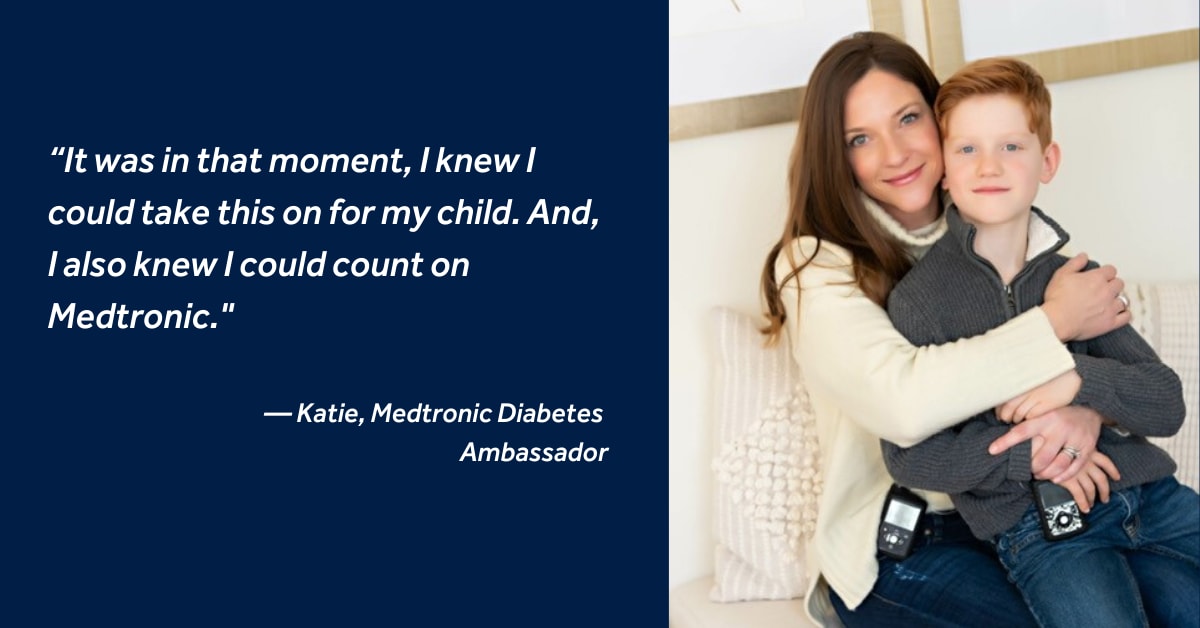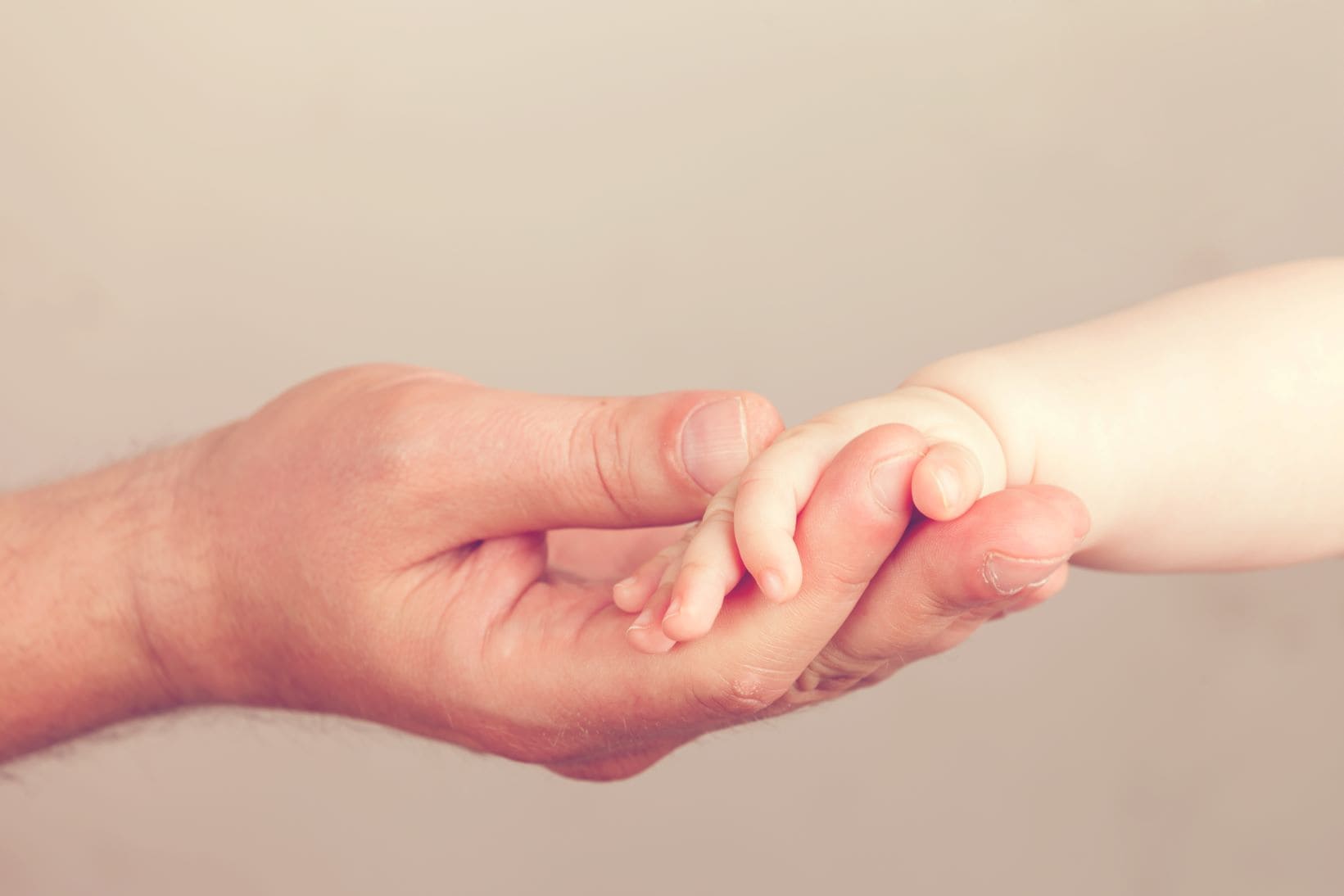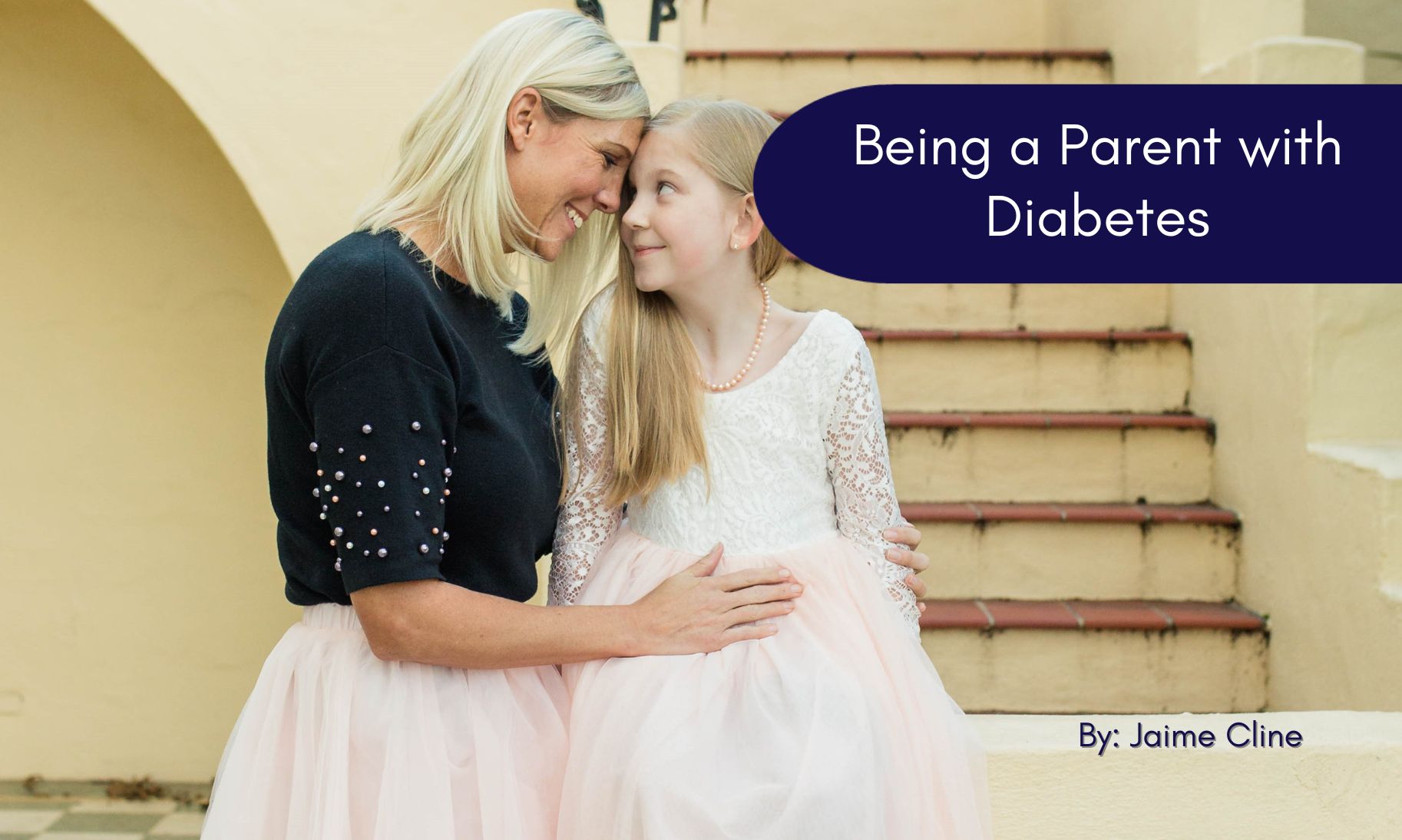One mom’s tips for navigating your child’s type 1 diabetes diagnosis

Our team had the pleasure of meeting Megan Nagel and her son, Luke, when we went to their home to film their story, which you can see more of here. We recently asked Megan if there was anything she wished she would have known when Luke was first diagnosed with diabetes. Today, she shares those tips with our community.
On February 26, 2013, my 4-year-old son, Luke, was diagnosed with type 1 diabetes. On that day, I felt our life had come to a screeching stop because while I knew that type 1 diabetes was a serious disease, that was all I knew. The next day at a type 1 diabetes clinic, we learned everything there was to know about how to care for Luke, and then took him home to begin our life with type 1 diabetes. Over the past 7 years, we have made a lot of mistakes with how we have responded to both the physical and emotional lows and highs, but we have also made some great strides that have taught us not only about type 1 diabetes but about who we are. Those early days and months were very difficult and when I reflect on that time, I realized something. I would never have asked for this to happen to my sweet little boy, but because it did, our family is kinder, slower, and more aware of others, and I am so thankful for that. Type 1 diabetes has shown us life is fragile and to not take anything for granted. Since those first days after Luke was diagnosed, I’ve learned to appreciate that while this disease will rear its ugly head often throughout your life, it doesn’t have to control your life. Remember to continue living, find the helpers, don’t take anything personally, and stay vigilant.
Continue living
When Luke was diagnosed, I was a full-time graduate student with a very heavy load of classes. While in the ER, when he was diagnosed, there was a 3-minute period where I considered leaving the graduate program and devoting my life and energy to caring for Luke. This consideration lasted only 3 minutes because I quickly realized my decision mattered. And while Luke was not  consciously watching how I responded, he would learn from my response. I remember sitting in the ER, just Luke and I, and realizing that I wanted Luke to learn that even when we don’t like what life is handing us, we stand up, dust ourselves off and walk again -- slowly at first until we are steady again and then we use what we have learned to light the path.
consciously watching how I responded, he would learn from my response. I remember sitting in the ER, just Luke and I, and realizing that I wanted Luke to learn that even when we don’t like what life is handing us, we stand up, dust ourselves off and walk again -- slowly at first until we are steady again and then we use what we have learned to light the path.
When you are ready, do as Mr. Rogers said, and “Look for the helpers”
When Luke was first diagnosed, many people, including my mother, offered to come help us, but I didn’t know how I needed help, so I turned everyone down. At the time of diagnosis, all I knew was that I only had the ability to care for Luke’s immediate needs and his two older brothers. I knew I was still too emotional to care for other people’s questions and responses to the diagnosis, so I just took a time out. Once I began to feel more confident, I started to recognize what “help” really meant. For me, “help” meant someone who would listen and be willing to give Luke a shot if that was what he needed. As it turned out, my turning everyone away at first was really helpful because when I was ready, those who were not really able to help had naturally drifted away while those who could help were still there waiting to listen and care. I didn’t realize it at the time, but taking a time out was probably one of the kindest most helpful things I could’ve done for our family.
Everyone wants to give you information, including your CGM— don’t take any of it personally
From the moment Luke was diagnosed to this very day, we have received unsolicited advice from everyone. Some of the advice is shocking — like how to eat “cheat foods”— and other advice is more subtle —like how to parent. While the advice comes from a thoughtful place, it is just that — advice. Just because it is given doesn’t mean you have to follow it, and you certainly don’t have to judge yourself based on it. Not taking anything personally, including good and bad blood sugars, helps you to see the whole picture and not just one section of the picture. You and your child are more than the numbers that show up every day.
Stay vigilant
This is the hardest part about type 1 diabetes because you go from never even having to think about insulin or how much your child needs to thinking about it all day every day. Our minds play  tricks on us and can lead us to believe that not checking blood sugars when needed is freedom, but the truth is, staying vigilant is really what gives us freedom from the disease. I find this especially true now that we have been using the MiniMed 670G system, because it does so much of the work for us. When we regularly check blood sugars and calibrate twice a day, Luke does fine. He is able to ski, ride his bike, and travel without worry. Vigilance means Luke feels good and spends more time in the classroom. Vigilance is freedom.
tricks on us and can lead us to believe that not checking blood sugars when needed is freedom, but the truth is, staying vigilant is really what gives us freedom from the disease. I find this especially true now that we have been using the MiniMed 670G system, because it does so much of the work for us. When we regularly check blood sugars and calibrate twice a day, Luke does fine. He is able to ski, ride his bike, and travel without worry. Vigilance means Luke feels good and spends more time in the classroom. Vigilance is freedom.
Remember, you know what you need. Be kind to yourself, advocate for what you know is right and be forgiving because your numbers or your child’s numbers are not a reflection of who you are. They are a reflection of a disease that has a mind of its own.
The testimonial above relates an account of an individual’s experience with a Medtronic device. The account is genuine, typical and documented. However, this individual’s experience does not provide any indication, guide, warranty or guarantee as to the response or experience other people may have using the device. The experience other individuals have with the device could be different. Experiences can and do vary. Please talk to your doctor about your condition and the risks and benefits of Medtronic devices.
Important Safety Information
MINIMED 670G SYSTEM
The Medtronic MiniMed™ 670G system is intended for continuous delivery of basal insulin (at user selectable rates) and administration of insulin boluses (in user selectable amounts) for the management of type 1 diabetes mellitus in persons, seven years of age and older, requiring insulin as well as for the continuous monitoring and trending of glucose levels in the fluid under the skin. The MiniMed™ 670G system includes SmartGuard™ technology, which can be programmed to automatically adjust delivery of basal insulin based on Continuous Glucose Monitor sensor glucose values and can suspend delivery of insulin when the sensor glucose value falls below or is predicted to fall below predefined threshold values.
The system requires a prescription. The Guardian™ Sensor (3) glucose values are not intended to be used directly for making therapy adjustments, but rather to provide an indication of when a fingerstick may be required. A confirmatory finger stick test via the CONTOUR®NEXT LINK 2.4 blood glucose meter is required prior to making adjustments to diabetes therapy. All therapy adjustments should be based on measurements obtained using the CONTOUR®NEXT LINK 2.4 blood glucose meter and not on values provided by the Guardian™ Sensor (3).
Always check the pump display to ensure the glucose result shown agrees with the glucose results shown on the CONTOUR®NEXT LINK 2.4 blood glucose meter. Do not calibrate your CGM device or calculate a bolus using a blood glucose meter result taken from an Alternative Site (palm) or from a control solution test. It is not recommended to calibrate your CGM device when sensor or blood glucose values are changing rapidly, e.g., following a meal or physical exercise. If a control solution test is out of range, please note that the result may be transmitted to your pump when in the “Always” send mode.
WARNING: Medtronic performed an evaluation of the MiniMed™ 670G system and determined that it may not be safe for use in children under the age of 7 because of the way that the system is designed and the daily insulin requirements. Therefore this device should not be used in anyone under the age of 7 years old. This device should also not be used in patients who require less than a total daily insulin dose of 8 units per day because the device requires a minimum of 8 units per day to operate safely. |
Pump therapy is not recommended for people whose vision or hearing does not allow recognition of pump signals and alarms. Pump therapy is not recommended for people who are unwilling or unable to maintain contact with their healthcare professional. The safety of the MiniMed™ 670G system has not been studied in pregnant women. For complete details of the system, including product and important safety information such as indications, contraindications, warnings and precautions associated with system and its components, please consult http://www.medtronicdiabetes.com/important-safety-information#minimed-670g and the appropriate user guide at http://www.medtronicdiabetes.com/download-library



